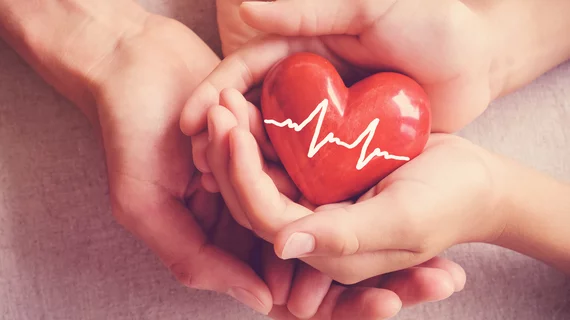Having a romantic partner present—or even just calling up their image mentally—can help heart patients keep their blood pressure (BP) in check when dealing with stressful situations, according to research published in Psychophysiology.
The study, led by University of Arizona doctoral student Kyle J. Bourassa, MA, examined cardiovascular reactivity (CVR) in relation to stress and romantic partnerships. Since there’s a wealth of evidence supporting the idea that strong relationships translate to better health outcomes, Bourassa said his team wanted to explore how mentally drawing on an image of those relationships influenced people’s physical health.
“In a prior study, my colleagues and I found that, in a group of people whose partner passed away, the characteristics of a person’s spouse predicted their own wellbeing, even years after they had died,” he told Cardiovascular Business. “This led me to wonder what cognitions about a spouse might influence people even when their partner isn’t physically present.”
Bourassa et al. laid the groundwork for their study with two psychological principles: social baseline theory and attachment theory. The former suggests we see a reduced response to stress when our partners are close, and the latter is the idea that, as humans, we form close, lasting bonds that are critical to our health and development.
So, in a study of 102 college students in Tucson, all of whom were in romantic relationships, Bourassa’s team hypothesized that having a partner in the room during a stressful task or calling up their image mentally might help mitigate the negative physiological effects of stress and lessen CVR in the form of a decreased BP and heart rate (HR) and increased heart rate variability (HRV).
The stressful task in question involved submerging one foot in three inches of 38-degree Fahrenheit water, during which time subjects either had their partner present in the room, were asked to draw up a supportive mental image of their partner or were asked to think about their day. Those asked to think about their day comprised the control group.
Bourassa and his co-authors measured BP, HR and HRV before and after the cold pressor test and found no difference between the partner present and mental activation groups for systolic or diastolic blood pressure. Compared to the control group, though, those subjects’ SBP and DBP increased 4.41 mmHg and 3.38 mmHg less, respectively, from baseline to the cold pressor task.
Though both partner present and mental activation groups saw similar BP values, patients in the partner present cohort reported roughly 12 percent less pain associated with the task. The authors also considered relationship quality, assuming subjects in the highest-quality relationships would buffer most effectively against CVR when stressed, but found that quality only made a difference in the control cohort.
When having a partner physically present or drawing on a supportive image, BP reactivity based on relationship quality didn’t change, the researchers reported. On the other hand, people in the control group in higher quality relationships saw reduced BP reactivity.
“This was a bit of a mystery to us, as we had predicted the opposite—relationship quality would impact BP reactivity in the partner present and mental activation groups, but not the control group,” Bourassa said. “We thought this might suggest that people gain a benefit from thinking about their partner supporting them or having them there, regardless of the quality of their relationship, whereas for people in the control group, they might spontaneously draw on their high-quality partners when asked to think about their day, whereas those with poorer quality relationships would not.”
He said the researchers didn’t find any differences in heart rate or HRV, which might be because BP can be more responsive to the kinds of stressors they were testing. In addition, the study sample was one of healthy young adults who were unlikely to have heart problems.
Bourassa said he and his colleagues’ next steps might involve studying how physical touch, as another type of relationship cue, might reduce stress or impact CVR compared to the groups tested in the present study. He also said he wants to apply his team’s findings practically.
“I would want to see how this knowledge might be used to help reduce stress in real-life settings,” he said. “For example, is there a way to use mentally drawing on a partner in stressful situations to help people cope with distress?”

